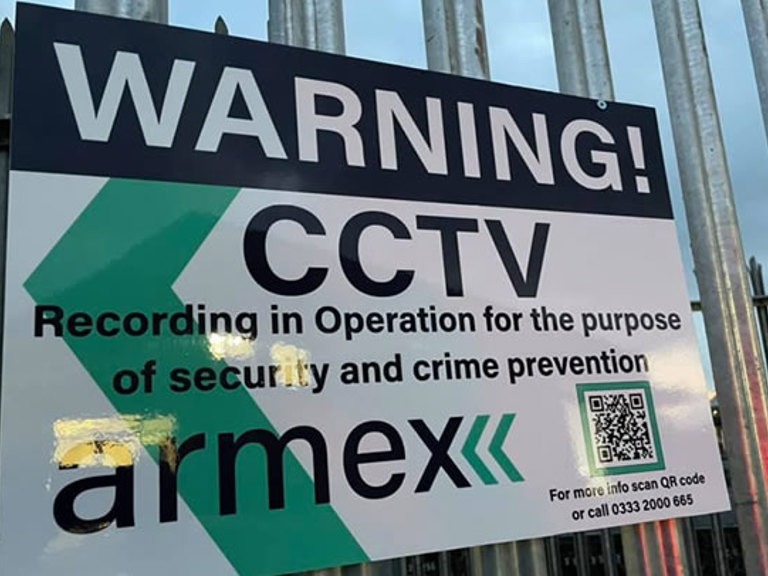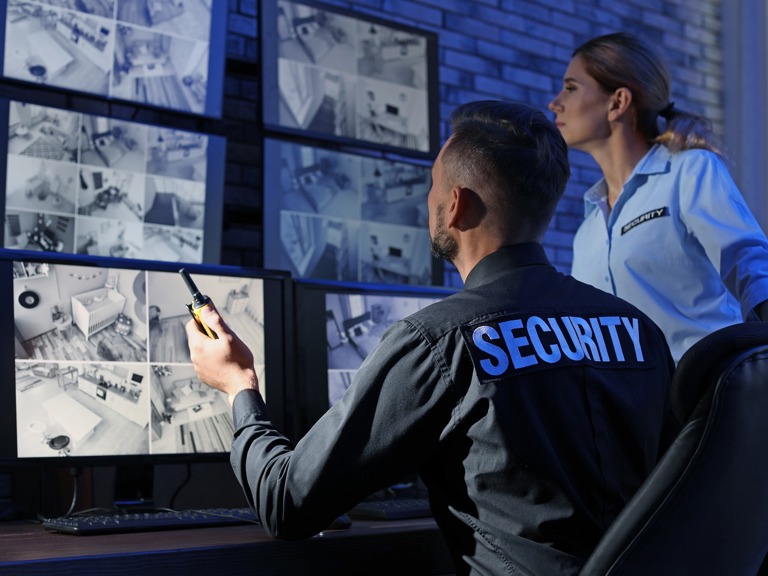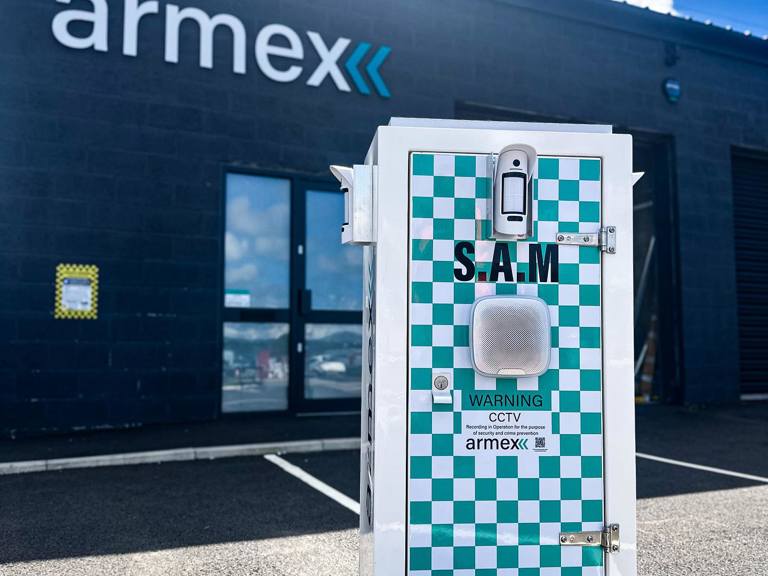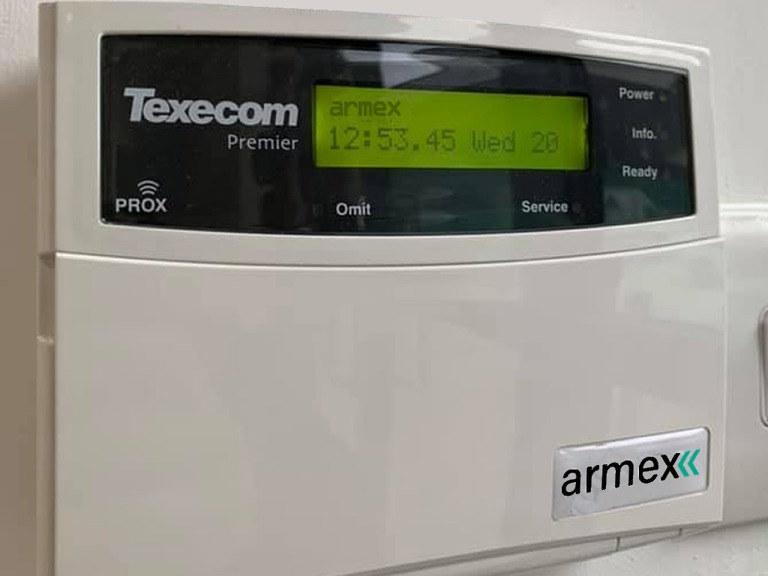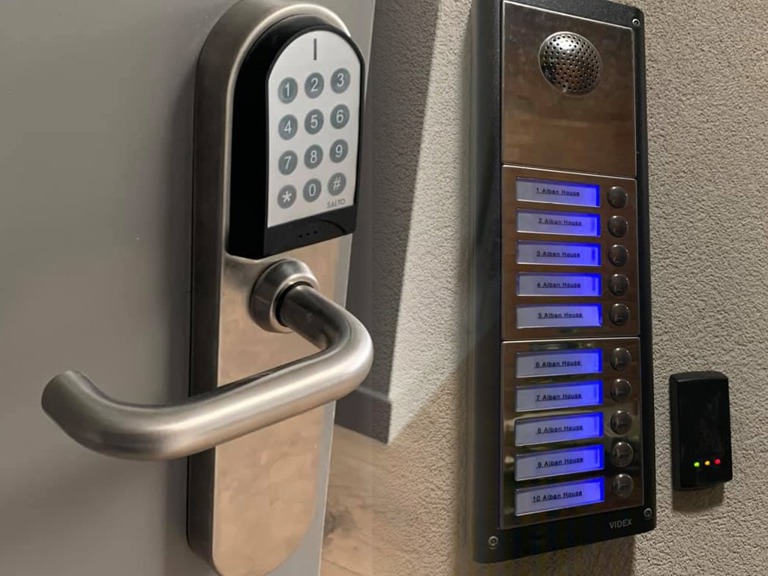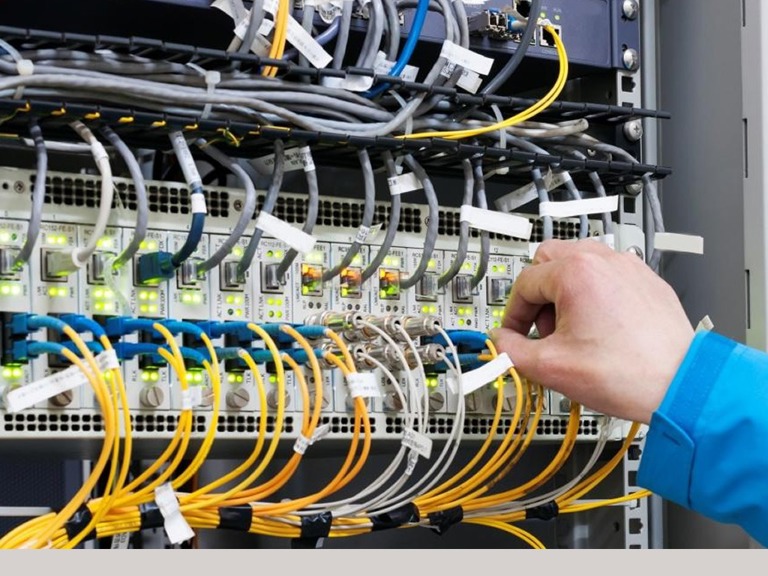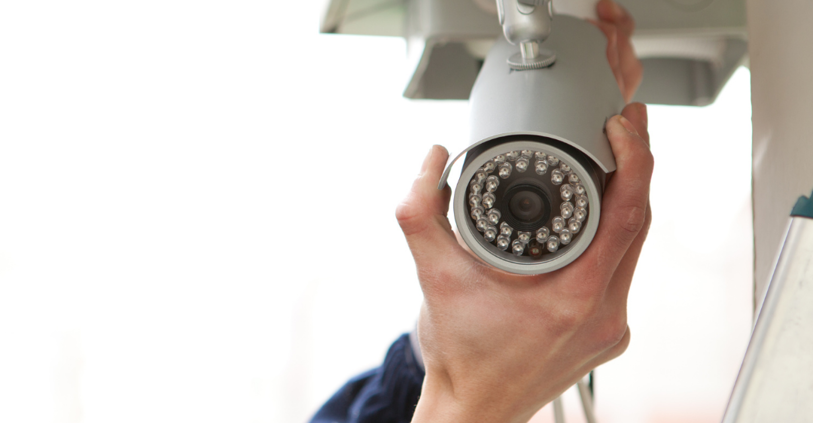
Investing in CCTV cameras is a crucial step in safeguarding your property. But where should these cameras be placed to maximise coverage and deter potential criminals? In this guide, we’ll walk you through the most popular locations for CCTV camera placement on any premises and explain why each area is essential for effective surveillance. By the end of this, you’ll know where your cameras can make the most impact, and why a professional site survey is the best way to ensure nothing gets overlooked.
Main Entrances and Exits
The first place to start when installing CCTV cameras is the primary access points—front doors, back doors, and any other main exits or entrances. These are the most critical areas to monitor because they serve as the primary entry point for most visitors, including potential intruders.
Positioning cameras at entrances helps you:
- Track who comes in and out – This is essential for both security and monitoring visitors.
- Capture clear facial footage – It’s the best location for getting a direct view of anyone entering your premises.
- Deter would-be intruders – The mere sight of a camera at the door acts as a strong deterrent.
Driveways and Car Parks
If you have a driveway or a parking area, this is another key spot for CCTV cameras. Vehicles are a prime target for theft or vandalism, and monitoring these areas can be an effective deterrent.
CCTV cameras here provide:
- Full coverage of vehicle movements – This includes watching out for unauthorised vehicles.
- A record of suspicious behaviour – Loitering around parked cars or property can be flagged before a crime happens.
- Protection for employees or visitors – A monitored car park feels safer, especially at night.
Perimeter and Fencing
Another crucial location for CCTV is along the perimeter of your property. Whether it’s fencing, walls, or gates, monitoring these boundaries is essential to catch any unauthorised entry or suspicious activity before it gets closer to your building.
CCTV coverage of the perimeter:
- Detects intruders early – You’ll know when someone attempts to enter the property unlawfully.
- Covers vulnerable access points – Gates, side alleys, and poorly lit corners can be closely monitored.
- Increases overall security – Coupled with motion sensors, cameras on the perimeter can trigger alerts and alarms, enabling a faster response to threats.
Our professional team can assess the right camera types for these areas, ensuring they are equipped with motion detection and wide-angle lenses to cover large areas efficiently.
Rear Entrances and Side Access Points
While main entrances are obvious targets for surveillance, side and rear entrances are often neglected. However, these spots are favoured by intruders, precisely because they are less visible. Ensuring they are covered by CCTV is just as important as the front of the building.
Placing cameras at these points offers:
- Surveillance of hidden areas – Side doors or rear alleys are common entry points for criminals who want to avoid detection.
- Complete visibility around the building – It prevents anyone from moving unnoticed between entrances.
- Added peace of mind – Knowing all access points are covered can significantly enhance security.
A site survey will help you choose the most strategic spots for these cameras, balancing coverage and discretion to keep intruders guessing.
Internal Areas: Hallways and High-Traffic Zones
CCTV isn’t just for the outside of your property. Monitoring internal areas like hallways, reception areas, and high-traffic zones inside the building is crucial for both security and operational reasons.
Inside CCTV offers:
- Monitoring of employee and visitor activity – Whether it’s tracking staff movements or checking on customer flow, CCTV can provide useful operational insights.
- Safeguarding sensitive areas – Keep an eye on areas that require extra security, such as stock rooms, offices, or data storage rooms.
- Protection in case of incidents – If something happens inside the building, like a theft or altercation, the footage provides valuable evidence.
When we perform a site survey, we can help identify blind spots in these internal areas and advise on the best camera types for indoor monitoring, from dome cameras to hidden CCTV.
Warehouse or Storage Areas
For businesses that store valuable goods or equipment, securing warehouses and storage areas with CCTV is essential. These spaces often contain high-value items, making them a prime target for theft or unauthorised access.
CCTV cameras here help by:
- Monitoring inventory – Keep track of who accesses the stock, especially in off-hours.
- Deter theft – Visible cameras discourage both internal and external theft.
- Provide evidence – In the event of a security breach, recorded footage can aid investigations.
Why You Need a Professional Site Survey
While these areas represent the most common locations for CCTV cameras, every property is unique. Blind spots, lighting conditions, and potential obstructions all play a role in determining where to place your cameras. That’s why we recommend a professional site survey to assess your premises in detail. Our experts will:
- Identify potential blind spots – Ensuring complete coverage with no gaps.
- Recommend the best camera types – From bullet cameras to PTZ (pan-tilt-zoom) cameras, we’ll advise you on the best solutions for each area.
- Plan optimal placement – So your CCTV system works seamlessly day and night, rain or shine.
Book Your CCTV Site Survey Today
At the end of the day, CCTV placement is about more than just slapping cameras on walls. It’s about strategically positioning them to protect your property, employees, and visitors effectively. Book a site survey with us today, and let our team of experts help you design a CCTV system tailored to your specific needs—ensuring you get the peace of mind that comes from knowing your property is fully protected.
Don’t wait until it’s too late—get in touch and secure your site survey today!

